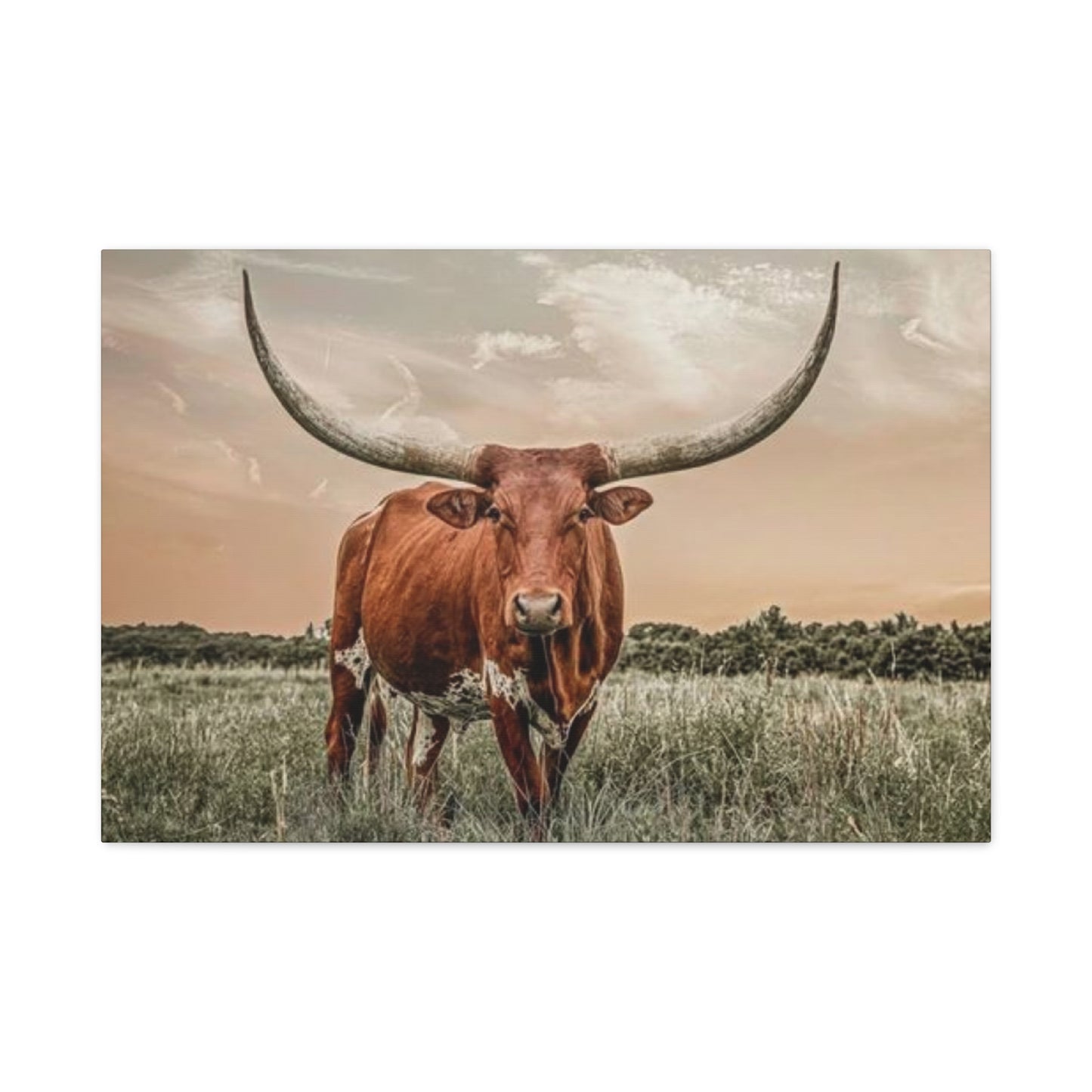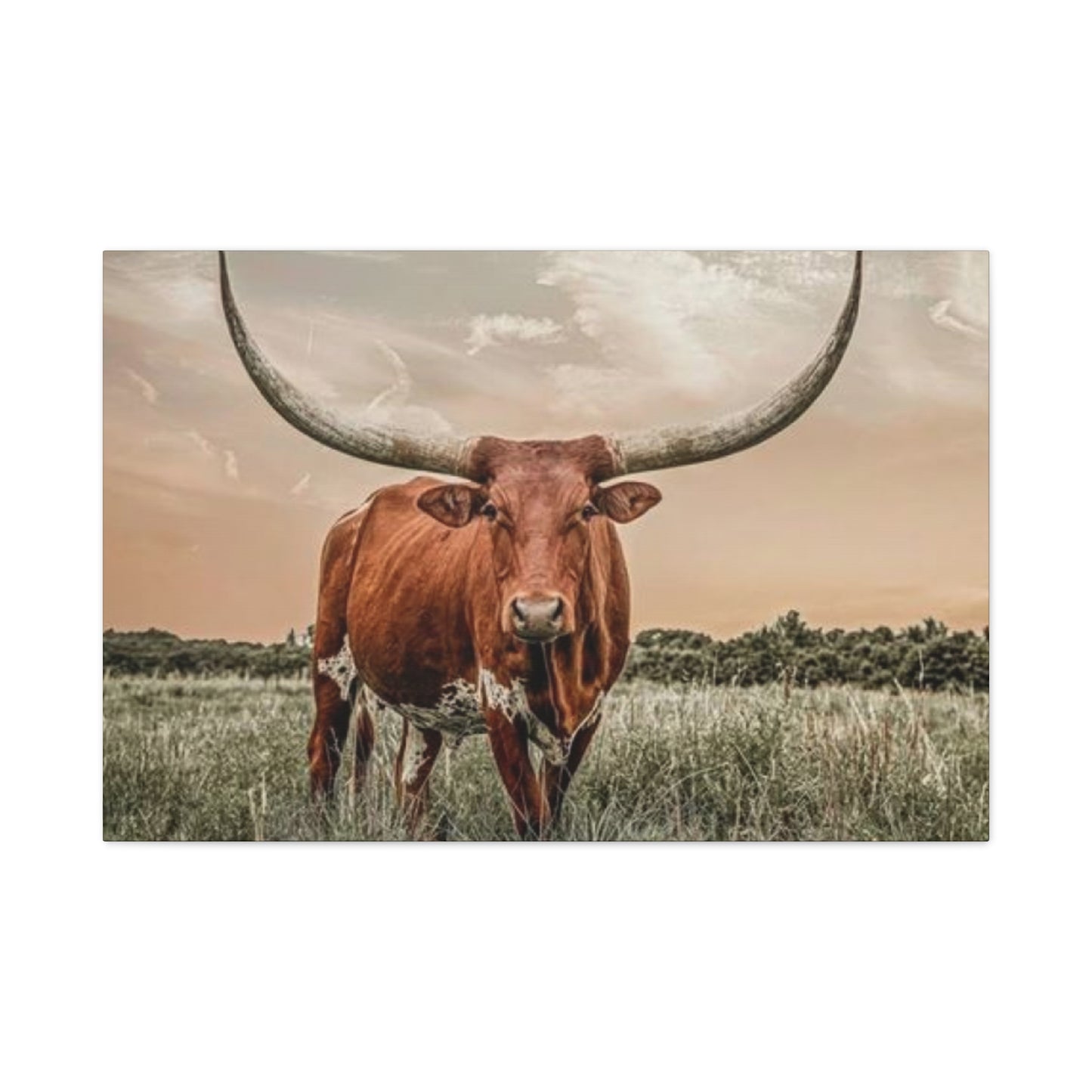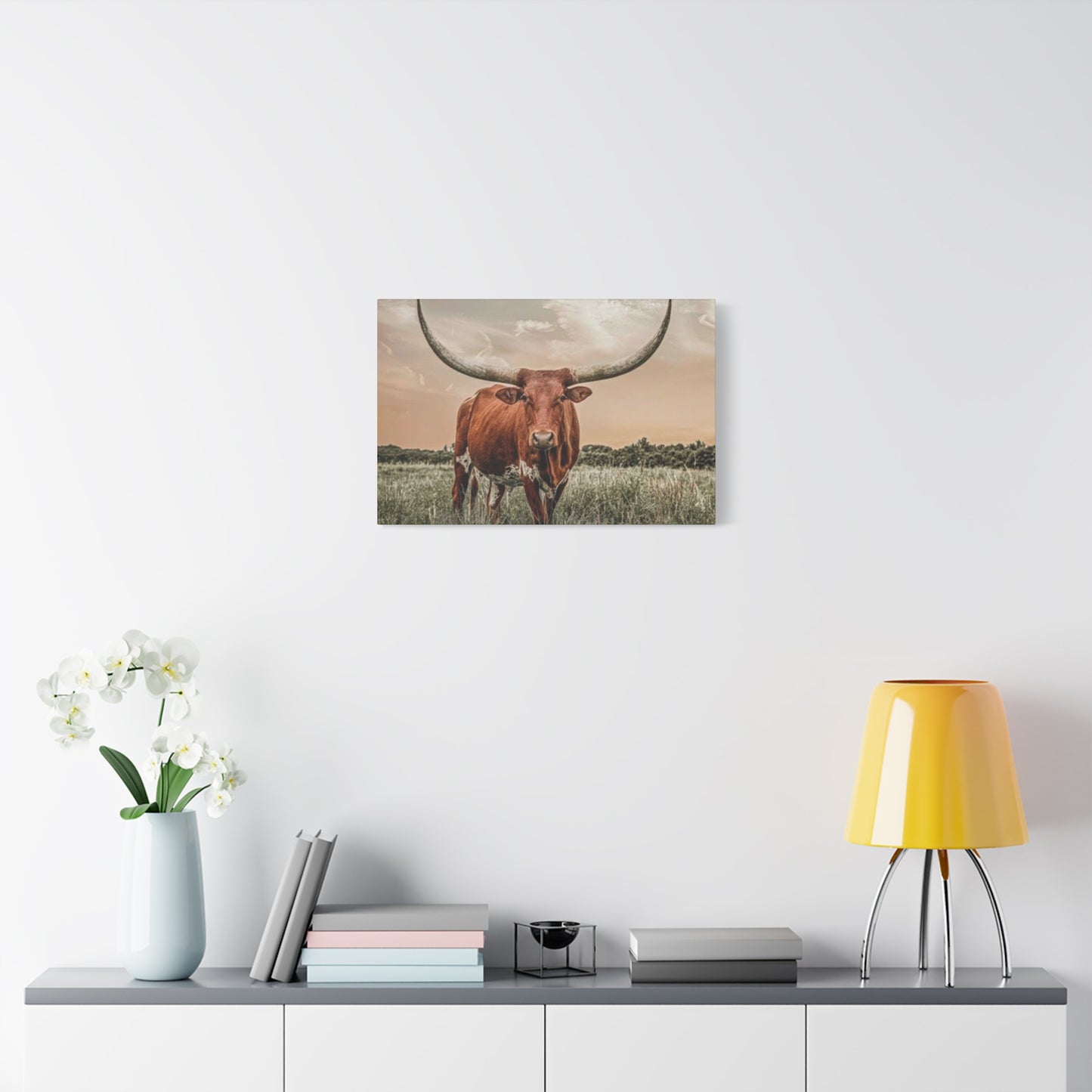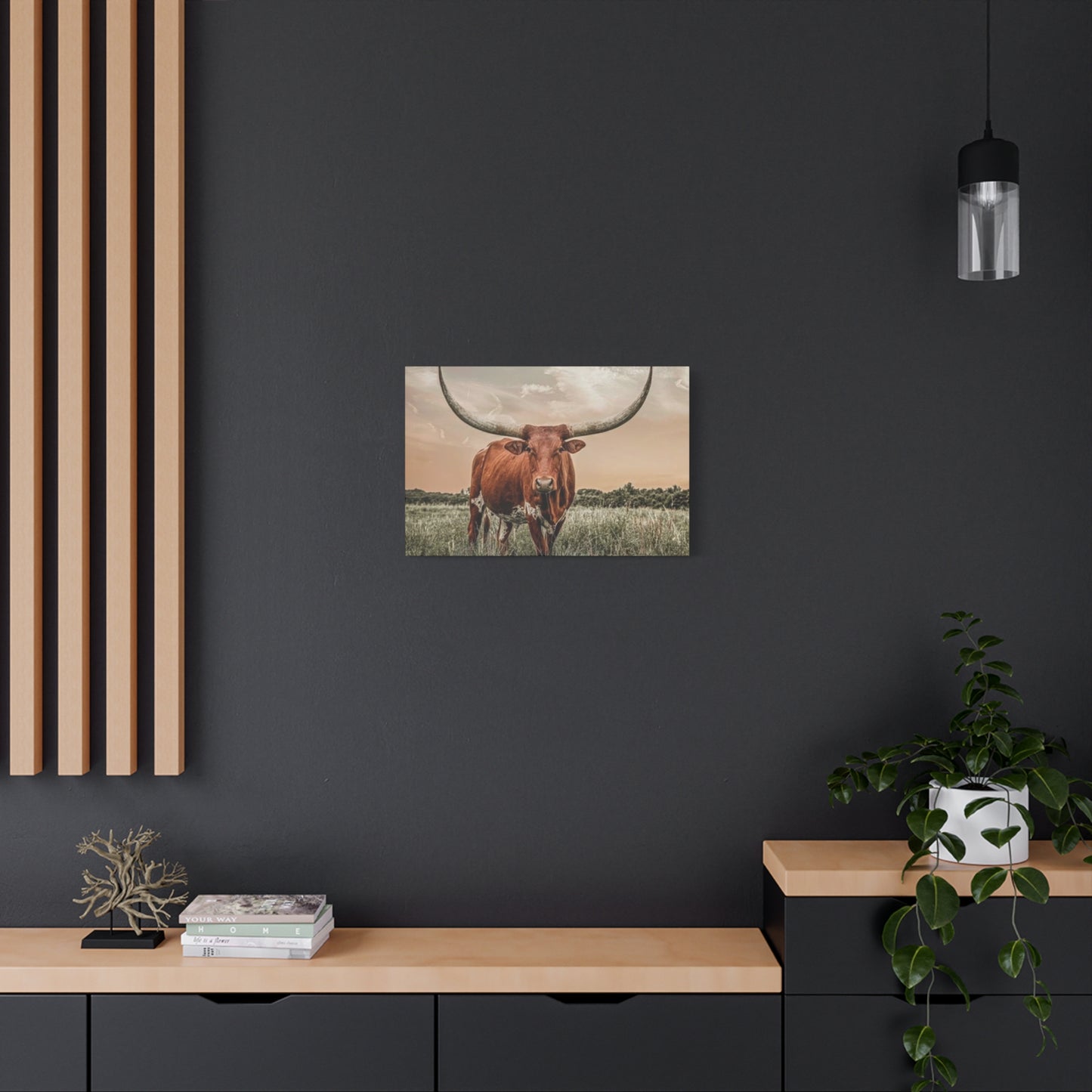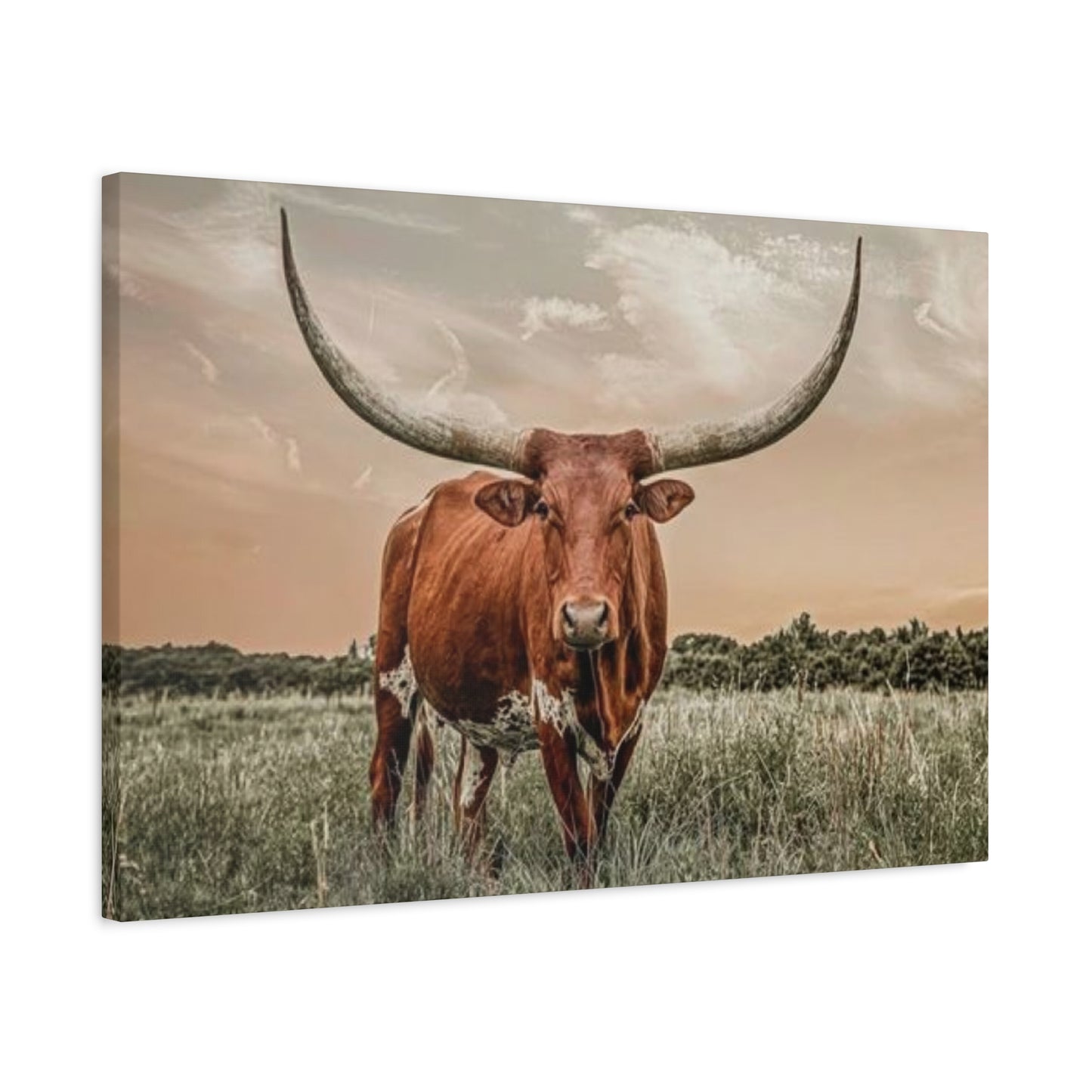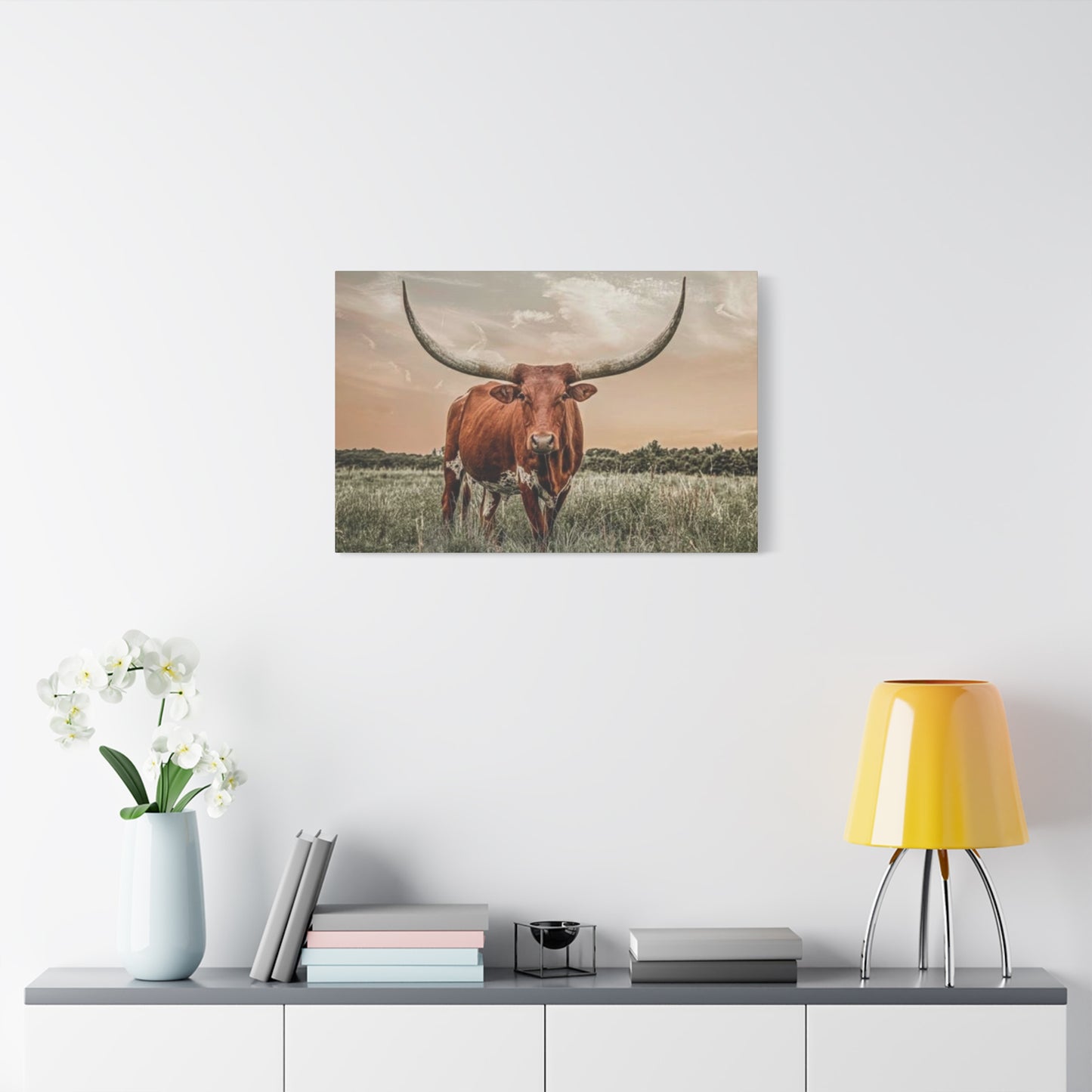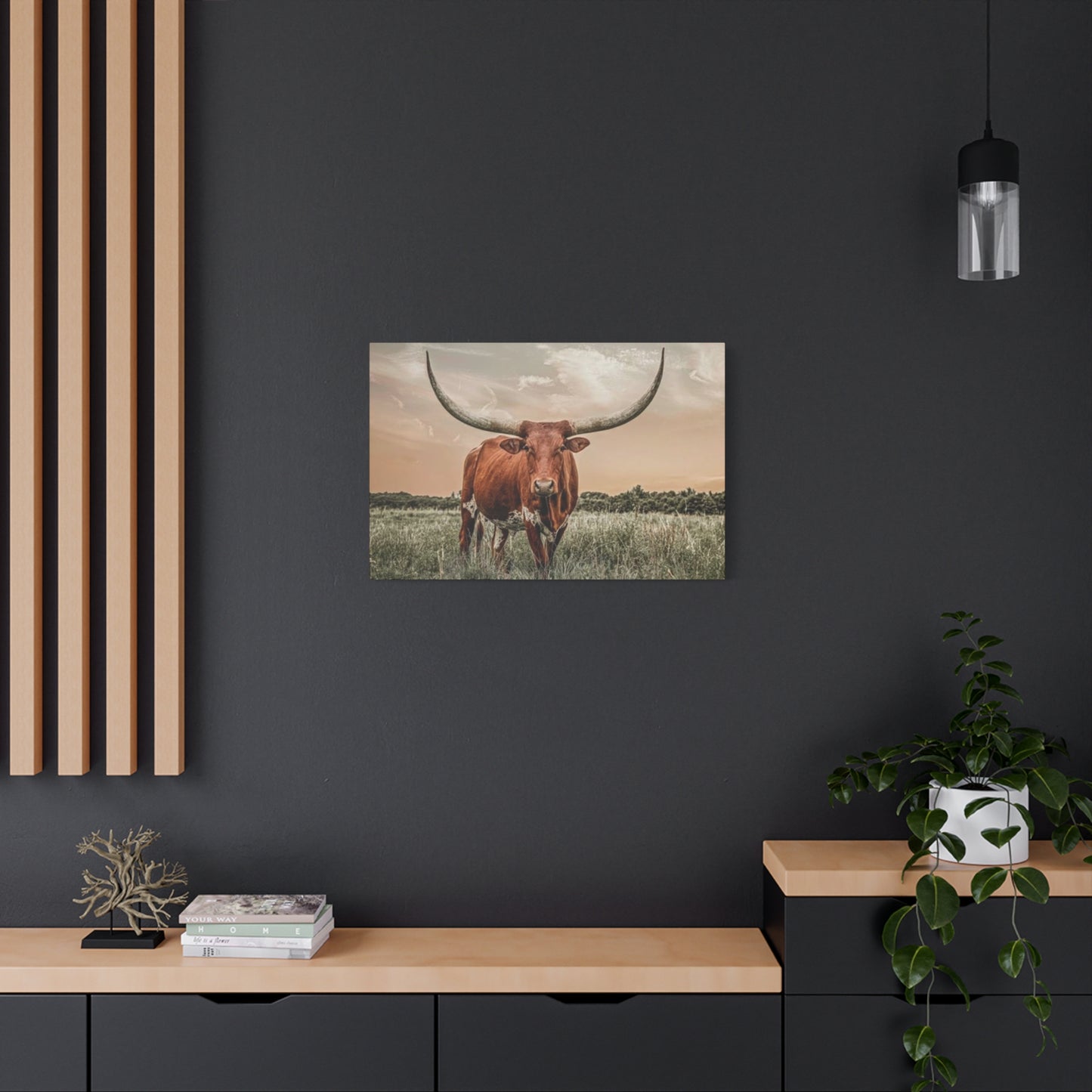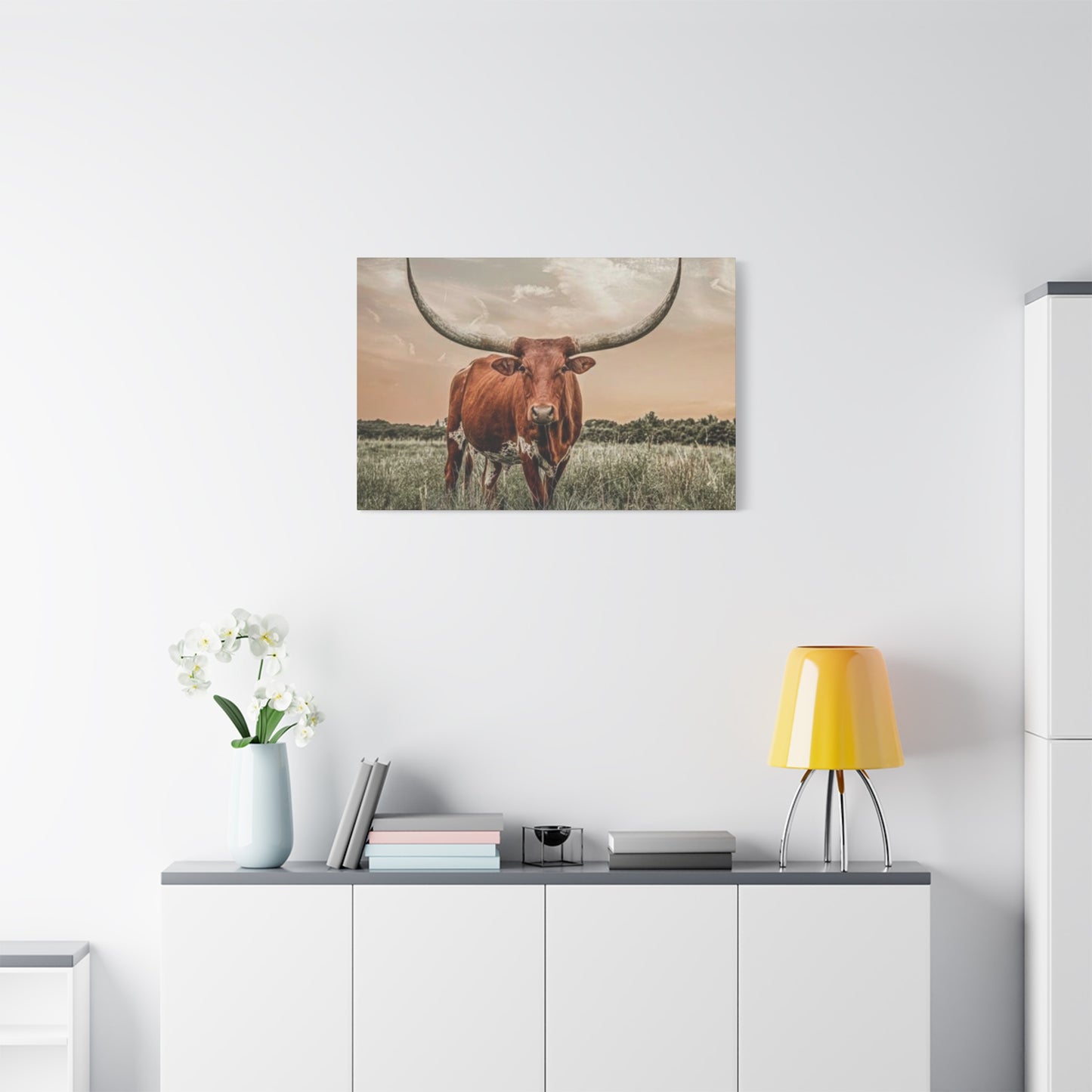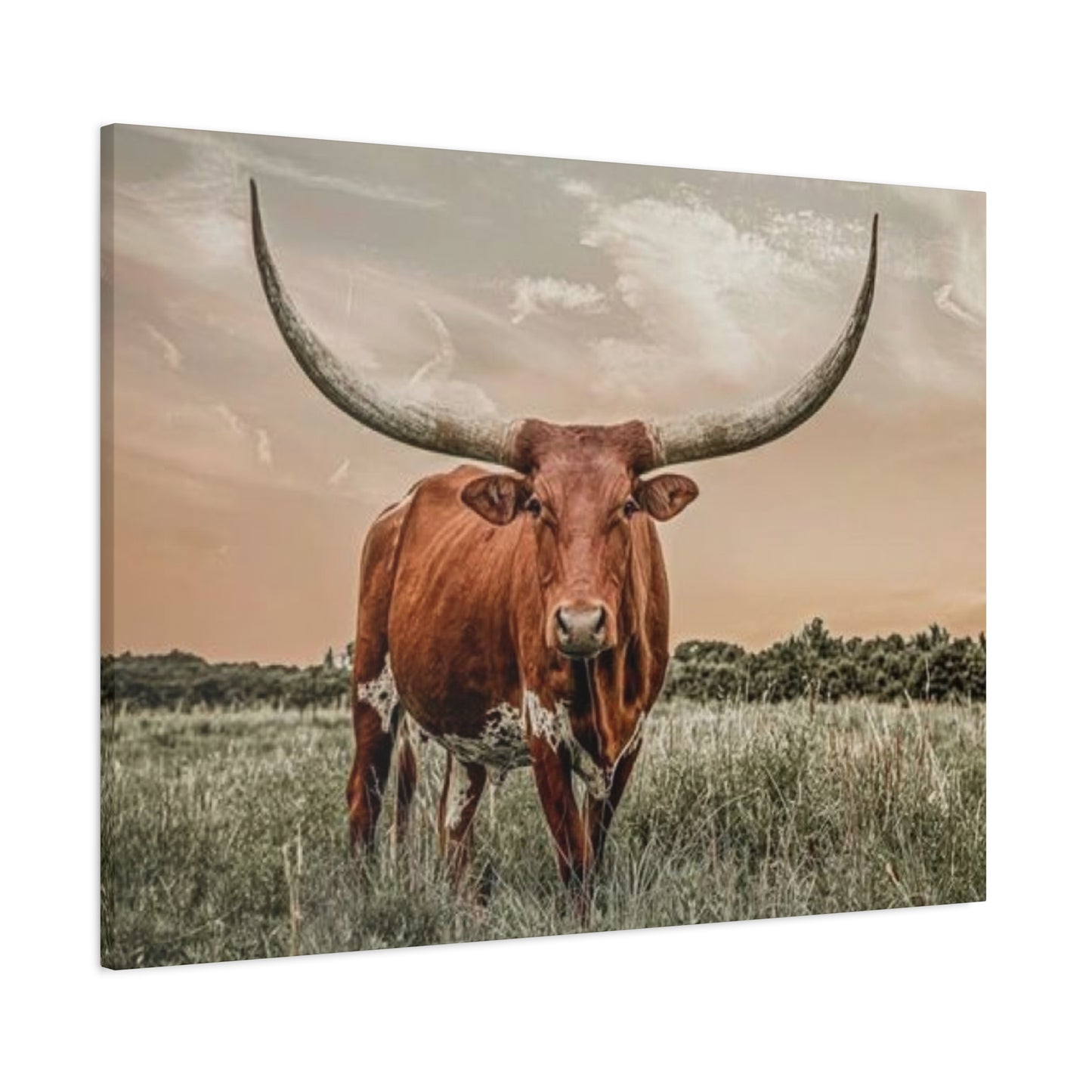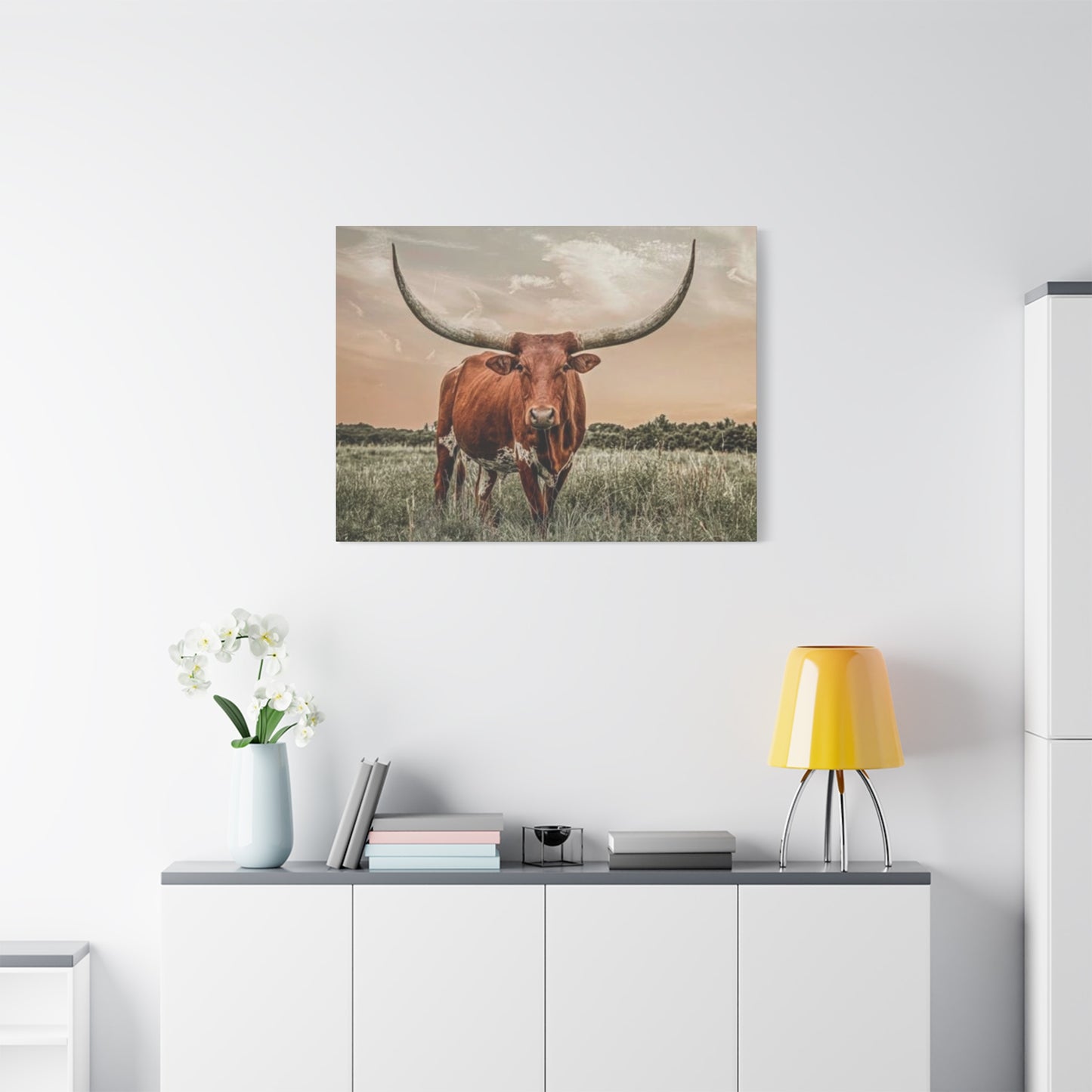Abstract and Realistic Buffalo U-Shaped Long Horns Wall Art for Contemporary Homes
The captivating presence of hairy buffalo U-shaped long horns wall art canvas prints represents more than mere decoration; it embodies the raw spirit of the American frontier and the untamed wilderness that once dominated vast landscapes. These powerful artistic representations capture the essence of one of North America's most iconic creatures, the mighty buffalo, with particular emphasis on their distinctive curved horn formations that have fascinated humans for centuries.
Buffalo, also known as American bison, possess a commanding presence that translates beautifully into canvas artwork. Their massive heads crowned with characteristic U-shaped horns create striking visual compositions that command attention and respect. When rendered as wall art canvas prints, these magnificent creatures bring an authentic touch of the Wild West directly into contemporary living environments.
The artistic interpretation of hairy buffalo with their prominent U-shaped long horns offers viewers a connection to America's natural heritage. These canvas prints serve as powerful focal points that can transform ordinary rooms into extraordinary environments filled with character and personality. The textural quality of buffalo fur, combined with the dramatic curves of their horns, creates compelling visual narratives that speak to our collective memory of the frontier era.
Modern printing technologies allow for incredibly detailed reproductions that capture every nuance of buffalo anatomy, from the coarse texture of their winter coats to the weathered surface of their impressive horns. High-quality canvas materials ensure that these artistic representations maintain their visual impact for years to come, making them valuable additions to any art collection.
The appeal of hairy buffalo U-shaped long horns wall art extends beyond mere aesthetics. These pieces carry cultural significance that resonates with viewers who appreciate American history, wildlife conservation, and the enduring symbol of strength that buffalo represent. The U-shaped horn configuration, in particular, has become synonymous with power and determination, qualities that many people wish to incorporate into their living environments.
Contemporary artists and photographers continue to find inspiration in buffalo imagery, creating fresh interpretations of these timeless subjects. The combination of traditional subject matter with modern printing techniques results in wall art that bridges the gap between historical significance and contemporary appeal. Canvas prints offer the perfect medium for showcasing the rich textures and dramatic contrasts that make buffalo such compelling artistic subjects.
The versatility of hairy buffalo U-shaped long horns wall art canvas prints makes them suitable for various decorating schemes and architectural styles. Whether displayed in rustic cabin settings, modern loft apartments, or traditional family rooms, these pieces adapt to their surroundings while maintaining their distinctive character and visual impact.
Professional-grade canvas printing techniques ensure that every detail of buffalo anatomy is faithfully reproduced, from the individual hairs of their shaggy coats to the subtle gradations in horn coloration. The three-dimensional quality achieved through expert printing creates the illusion that these magnificent creatures might step right off the wall and into the room.
The emotional connection that people form with buffalo imagery runs deep, tapping into ancestral memories and cultural associations that have been passed down through generations. Hairy buffalo U-shaped long horns wall art canvas prints serve as tangible links to this heritage, allowing viewers to experience a sense of connection to the natural world and American history.
Collectors and art enthusiasts recognize the enduring value of wildlife-themed canvas prints, particularly those featuring iconic American animals like buffalo. The combination of artistic merit, cultural significance, and decorative appeal makes these pieces worthy investments that can appreciate in value over time while providing daily enjoyment for their owners.
The process of creating high-quality buffalo wall art begins with careful selection of source images that capture the essential characteristics of these magnificent animals. Professional photographers and artists spend countless hours observing buffalo behavior and anatomy to ensure that their artistic representations are both accurate and compelling.
Significance of Buffalo in American Culture
The cultural importance of buffalo in American history cannot be overstated, as these magnificent creatures played pivotal roles in shaping the identity of the Great Plains and the indigenous peoples who called this region home. Native American tribes developed deep spiritual connections with buffalo herds, viewing them as sacred beings that provided sustenance, shelter, and spiritual guidance. The relationship between indigenous communities and buffalo was one of mutual respect and careful stewardship that lasted for thousands of years.
Before European colonization, an estimated 60 million buffalo roamed the North American continent, creating one of the most spectacular wildlife displays on Earth. These massive herds moved seasonally across the plains, following ancient migration patterns that had been established over millennia. The thunderous sound of millions of hooves could be heard for miles, and the sight of endless buffalo stretching to the horizon inspired awe in all who witnessed it.
The near-extinction of buffalo during the late 19th century represents one of the most tragic chapters in American environmental history. Systematic hunting campaigns reduced the population from millions to fewer than 1,000 individuals within a span of just a few decades. This dramatic decline had profound consequences for both wildlife ecosystems and Native American cultures that depended on buffalo for survival.
The iconic image of buffalo with their characteristic U-shaped horns became deeply embedded in American consciousness during this period. Artists, writers, and photographers documented the majesty of these creatures, creating lasting impressions that continue to influence contemporary art and culture. The distinctive horn shape, in particular, became a symbol of the American frontier and the wild spirit of the West.
Recovery efforts beginning in the early 20th century helped bring buffalo back from the brink of extinction. Conservation programs, breeding initiatives, and habitat restoration projects gradually increased population numbers, though they remain a fraction of their historical levels. Today's buffalo herds serve as living reminders of America's natural heritage and the importance of wildlife conservation.
The symbolism associated with buffalo extends far beyond their physical presence. These animals represent resilience, strength, and the ability to endure harsh conditions. Their massive heads crowned with curved horns embody determination and unwavering spirit, qualities that resonate with people facing their own challenges and obstacles.
Modern buffalo populations are carefully managed through scientific breeding programs that maintain genetic diversity while ensuring sustainable growth. Researchers study buffalo behavior, genetics, and habitat requirements to develop effective conservation strategies that will preserve these magnificent animals for future generations.
The cultural revival of buffalo imagery in contemporary art reflects a growing appreciation for American wildlife and natural heritage. Hairy buffalo U-shaped long horns wall art canvas prints tap into this cultural renaissance, providing people with meaningful ways to connect with their natural and historical roots.
Educational programs and wildlife refuges help people learn about buffalo ecology and behavior, fostering deeper understanding and appreciation for these remarkable animals. Visitors to buffalo ranges often comment on the powerful emotional impact of seeing these creatures in their natural habitat, an experience that translates beautifully into artistic representations.
Artistic Elements That Make Buffalo Wall Art Compelling
The visual appeal of hairy buffalo U-shaped long horns wall art canvas prints stems from several key artistic elements that work together to create compelling and memorable images. The massive scale of buffalo heads provides artists with dramatic subjects that naturally command attention and create powerful focal points within any room. The proportions of buffalo anatomy, with their oversized heads relative to their bodies, create inherently dynamic compositions that draw viewers into detailed examination of their features.
Texture plays a crucial role in the artistic success of buffalo wall art, as the coarse, shaggy fur that covers these animals provides rich visual and tactile qualities that translate beautifully to canvas prints. The layered nature of buffalo hair, with longer guard hairs protecting softer undercoat, creates complex patterns of light and shadow that add depth and dimension to artistic representations.
The distinctive U-shaped horn configuration serves as a defining characteristic that immediately identifies buffalo and creates strong geometric elements within compositions. These curved forms provide natural leading lines that guide viewers' eyes throughout the image while creating pleasing visual rhythms and patterns. The weathered surface of buffalo horns, with their subtle variations in color and texture, offers artists opportunities to incorporate fine details that reward close observation.
Color palettes in buffalo wall art typically emphasize earth tones and natural hues that reflect the animals' prairie habitat. Rich browns, deep russets, and warm blacks dominate most compositions, with occasional highlights of cream or tan where sunlight catches the fur. This natural color scheme makes buffalo wall art particularly versatile for decorating purposes, as these colors complement a wide range of environments.
The eyes of buffalo serve as powerful emotional focal points within artistic compositions, conveying intelligence, dignity, and sometimes a hint of wildness that connects viewers to the untamed spirit these animals represent. Artists often emphasize the eyes through careful lighting and contrast, creating windows into the buffalo's character and personality.
Lighting effects in buffalo wall art can dramatically influence the mood and impact of the piece. Strong directional lighting that illuminates one side of the buffalo's face while leaving the other in shadow creates dramatic contrast and three-dimensional modeling that makes the image appear to leap off the canvas. Backlighting can create stunning silhouette effects that emphasize the distinctive horn shape and overall profile.
Environmental elements incorporated into buffalo wall art provide context and enhance the narrative quality of the pieces. Prairie grasses, storm clouds, snow, and other natural elements help establish the buffalo's relationship with its habitat while adding visual interest and compositional balance.
The angle and perspective from which buffalo are depicted can significantly impact the viewer's emotional response to the artwork. Low-angle views that look up at the buffalo create impressions of power and dominance, while eye-level perspectives foster feelings of connection and intimacy. Close-up views that focus on facial features and horn details create dramatic impact and allow viewers to appreciate the intricate beauty of buffalo anatomy.
Artistic style variations in buffalo wall art range from photorealistic representations that capture every detail with scientific accuracy to more interpretive approaches that emphasize emotional impact and artistic expression. Both styles have their place in contemporary art markets, appealing to different audiences and serving different decorative purposes.
Canvas Printing Technology for Wildlife Art
Modern canvas printing technology has revolutionized the way wildlife art is produced and distributed, allowing for unprecedented quality and accessibility in reproducing detailed animal imagery. The evolution from traditional printing methods to advanced digital processes has opened new possibilities for creating hairy buffalo U-shaped long horns wall art that maintains exceptional fidelity to original source materials.
High-resolution digital imaging serves as the foundation for quality canvas prints, with professional-grade cameras and scanners capable of capturing millions of pixels worth of detail from original artwork or photographs. This digital foundation ensures that every subtle gradation in buffalo fur texture and horn coloration can be preserved and reproduced with remarkable accuracy.
Inkjet printing technology designed specifically for fine art applications utilizes specialized pigment-based inks that offer superior color accuracy and longevity compared to traditional dye-based alternatives. These archival-quality inks are formulated to resist fading, color shifting, and degradation from environmental factors, ensuring that buffalo wall art maintains its visual impact for decades.
The canvas substrate used in professional printing operations varies in weight, texture, and composition to achieve different artistic effects. Heavier canvas weights provide stability and durability, while textured surfaces can enhance the tactile qualities that complement buffalo fur imagery. Cotton and polyester blend canvases offer excellent ink absorption and color retention properties.
Color management systems ensure that printed buffalo wall art accurately reproduces the intended colors from digital files. Professional printers use calibrated monitors, standardized lighting conditions, and color profiling techniques to maintain consistency throughout the production process. This attention to color accuracy is particularly important for wildlife art, where natural coloration must be faithfully represented.
The printing resolution capabilities of modern equipment allow for extremely fine detail reproduction that can capture individual buffalo hairs and subtle horn surface variations. Print resolutions of 1440 dpi or higher ensure that even large-format canvas prints maintain sharp detail when viewed at normal distances.
Stretching and mounting processes for canvas prints require specialized techniques and equipment to ensure proper tension and alignment. Professional stretching maintains the canvas's structural integrity while providing the taut surface necessary for optimal display. Gallery-wrap mounting techniques hide staples and hardware behind the canvas edges for clean, professional presentation.
Quality control measures in professional canvas printing operations include color verification, print inspection, and durability testing. Each buffalo wall art piece undergoes careful examination to ensure it meets established standards for color accuracy, detail reproduction, and overall quality before being approved for distribution.
The versatility of canvas printing allows for customization options that can enhance the appeal of buffalo wall art. Size variations from intimate prints to large statement pieces provide options for different applications and budgets. Custom framing and mounting solutions can further personalize the final presentation.
Decorating Strategies for Buffalo Themed Wall Art
Incorporating hairy buffalo U-shaped long horns wall art canvas prints into home and office environments requires thoughtful consideration of placement, lighting, and surrounding decorative elements to maximize their visual impact and create cohesive design schemes. The powerful presence of buffalo imagery can serve as either dominant focal points or complementary elements within larger decorative themes, depending on the size and placement of the pieces.
Strategic placement of buffalo wall art often centers on creating commanding focal points that immediately capture attention when people enter a room. Large canvas prints positioned above mantels, behind seating areas, or on prominent wall sections establish strong visual anchors that influence the entire room's atmosphere and character. The imposing nature of buffalo imagery makes these pieces particularly effective in living rooms, family rooms, and study areas where bold statements are welcome.
Color coordination between buffalo wall art and existing room elements requires careful attention to the natural earth tone palette that dominates most buffalo imagery. The rich browns, russets, and blacks typical of buffalo fur work harmoniously with leather furniture, wood paneling, natural stone elements, and warm metal accents. These color relationships create unified design schemes that feel intentional and sophisticated.
Lighting design plays a crucial role in showcasing buffalo wall art effectively, with proper illumination enhancing the texture and detail that make these pieces compelling. Track lighting, picture lights, or strategically placed accent fixtures can highlight the dimensional qualities of canvas prints while creating dramatic shadow effects that emphasize the buffalo's powerful features.
Scale relationships between buffalo wall art and surrounding furnishings must be carefully balanced to avoid overwhelming smaller rooms or appearing insignificant in larger environments. Grouping multiple smaller buffalo prints can create gallery wall effects that provide visual weight comparable to single large pieces, while allowing for more flexible arrangement options.
Complementary artwork selections can enhance buffalo themed decorating schemes without competing for attention. Landscape photography featuring prairie scenes, Native American cultural artifacts, or other wildlife imagery can create thematic connections that reinforce the buffalo's cultural and environmental context.
Furniture selection and arrangement can support and enhance buffalo wall art displays through material choices and positioning that create visual harmony. Leather seating, reclaimed wood tables, wrought iron accents, and rustic textiles all complement the natural, rugged character associated with buffalo imagery.
Room style considerations influence how buffalo wall art integrates with overall design themes. Rustic cabin environments provide natural settings for buffalo imagery, while modern loft apartments can use these pieces as dramatic contrast elements that add warmth and character to minimalist designs. Traditional homes can incorporate buffalo art through carefully chosen pieces that respect classical proportions and color schemes.
Creating themed environments around buffalo wall art involves selecting accessories, textiles, and decorative objects that reinforce the Western or wildlife theme without creating overwhelming visual clutter. Subtle references through pottery, textiles, and natural materials can support the buffalo imagery while maintaining sophisticated design standards.
Seasonal decorating opportunities allow for temporary enhancements to buffalo wall art displays through complementary accessories and lighting changes. Autumn arrangements with dried grasses and warm lighting can emphasize the buffalo's connection to prairie environments, while winter displays might incorporate evergreen elements that reflect the animals' cold weather adaptations.
Buffalo Anatomy and Horn Structure Details
Understanding the anatomical features that make buffalo such compelling subjects for wall art requires detailed examination of their physical characteristics, with particular attention to the distinctive horn structures that define their appearance and contribute to their symbolic power. The massive skull structure of American bison supports horns that grow continuously throughout their lives, developing the characteristic curves and weathered surfaces that make each individual unique.
The horn composition consists of a bony core covered by a keratin sheath, similar to human fingernails but much thicker and more durable. This construction allows buffalo horns to withstand tremendous forces during head-to-head combat between bulls while maintaining their structural integrity across decades of use. The keratin surface develops distinctive ridges, grooves, and color variations that reflect the animal's age, health, and life experiences.
Sexual dimorphism in buffalo horn development creates distinct differences between male and female animals that artists often emphasize in their work. Bull buffalo develop larger, more heavily curved horns with greater mass and more pronounced weathering, while cow buffalo typically have smaller, more delicate horn structures that maintain smoother surfaces throughout their lives.
The U-shaped configuration that characterizes mature buffalo horns results from specific growth patterns that begin when the animals are young calves. Initial horn buds emerge at approximately six months of age and begin developing the characteristic curves that will define the adult horn shape. The inward curve followed by an upward sweep creates the distinctive silhouette that has become synonymous with buffalo imagery.
Age-related changes in horn appearance provide visual cues that experienced observers can use to estimate a buffalo's maturity and life stage. Younger animals display smoother horn surfaces with more pronounced curves, while older individuals show increased weathering, color variation, and sometimes damage from years of use in social interactions and environmental challenges.
The horn growth process continues throughout a buffalo's life, adding material at the base while the tips may wear down through use and environmental abrasion. This continuous growth and wear pattern creates the distinctive tapered profile that artists often emphasize to convey the animal's age and character.
Seasonal variations in horn appearance reflect changes in diet, health, and environmental conditions that affect keratin production and surface characteristics. Spring and summer growth periods often produce smoother, more lustrous horn surfaces, while winter conditions may result in rougher textures and color variations.
Individual variation in horn shape and size ensures that no two buffalo possess identical horn structures, providing artists with endless opportunities to create unique and distinctive representations. Some individuals develop particularly dramatic curves or unusual proportions that make them especially compelling artistic subjects.
The functional aspects of buffalo horns extend beyond their defensive capabilities to include thermoregulation and social communication functions. Blood vessels within the horn core help regulate body temperature, while horn positioning and movement serve as important elements in buffalo body language and social interactions.
Environmental factors influence horn development and appearance through their effects on nutrition, mineral availability, and physical stress levels. Buffalo living in harsh conditions may develop different horn characteristics compared to those in more favorable environments, adding authenticity to artistic representations that consider habitat influences.
The relationship between horn size and overall body proportions creates visual harmonies that artists must understand to create convincing buffalo representations. Oversized or undersized horns relative to head and body dimensions can make artwork appear awkward or unrealistic, while properly proportioned elements create compelling and believable images.
Horn damage and repair processes provide additional visual interest and authenticity to buffalo artwork, as wild animals frequently experience injuries from fighting, accidents, or environmental hazards. The way horn tissue responds to damage and attempts to heal itself creates unique patterns and textures that can add character to artistic representations.
Photographic Techniques for Capturing Buffalo
Professional photography of buffalo requires specialized techniques and equipment to overcome the challenges posed by these large, potentially dangerous animals while capturing the detail and character that make for compelling wall art. The combination of wildlife behavior knowledge, technical photographic skills, and artistic vision necessary for successful buffalo photography represents one of the more demanding aspects of nature photography.
Camera equipment selection for buffalo photography typically emphasizes long focal length lenses that allow photographers to maintain safe distances while achieving the magnification necessary for detailed shots. Telephoto lenses in the 400-600mm range provide the reach needed for close-up portraits while keeping photographers outside the animals' comfort zones and potential charge distances.
Lighting conditions play crucial roles in buffalo photography success, with golden hour lighting providing warm, directional illumination that enhances fur texture and creates dramatic shadow effects on horn structures. Early morning and late afternoon sessions often yield the most compelling results, though overcast conditions can provide excellent diffused lighting for detailed portraits.
Behavioral understanding enables photographers to anticipate buffalo movements and position themselves for optimal shots without disturbing the animals or endangering themselves. Knowledge of feeding patterns, social behaviors, and seasonal activities helps photographers predict when and where the best photographic opportunities will occur.
Camera settings for buffalo photography must balance several technical requirements, including sufficient shutter speeds to freeze movement, appropriate apertures to maintain sharp focus across the animal's features, and ISO settings that minimize noise while providing adequate exposure. The massive size of buffalo allows for relatively slow shutter speeds compared to smaller wildlife subjects.
Composition techniques specific to buffalo photography emphasize the animals' most distinctive features, particularly their massive heads and characteristic horn structures. Filling the frame with the buffalo's head and shoulders creates dramatic impact while allowing for maximum detail capture in fur texture and facial features.
Depth of field management becomes particularly important when photographing buffalo at close range, as the animals' three-dimensional bulk requires careful focus point selection to ensure that critical features remain sharp. The eyes typically serve as primary focus points, with depth of field calculations determining how much of the animal will appear in acceptable focus.
Environmental considerations for buffalo photography include weather conditions, seasonal factors, and habitat characteristics that influence both animal behavior and photographic opportunities. Snow conditions can create stunning contrast effects, while summer prairie settings provide authentic environmental context.
Safety protocols for buffalo photography cannot be overemphasized, as these animals are capable of sudden aggressive behavior and can achieve surprising speeds despite their bulk. Maintaining safe distances, understanding escape routes, and recognizing behavioral warning signs are essential skills for buffalo photographers.
Post-processing techniques for buffalo photographs focus on enhancing the natural characteristics that make these animals compelling while maintaining realistic appearance. Careful attention to contrast, shadow detail, and color balance can dramatically improve the final impact of buffalo imagery without creating artificial-looking results.
Cultural Symbolism of Buffalo Imagery
The cultural symbolism associated with buffalo imagery extends far beyond their physical presence, encompassing deep spiritual, historical, and emotional meanings that have evolved across different societies and time periods. For Native American cultures, buffalo represent sacred connections between the physical and spiritual worlds, embodying concepts of abundance, strength, and the cyclical nature of life that continue to influence contemporary artistic interpretations.
The relationship between Plains Indian tribes and buffalo herds created cultural frameworks that viewed these animals as generous providers whose sacrifice sustained human communities. This spiritual understanding infused buffalo imagery with sacred significance that artists continue to respect and incorporate into contemporary works, creating connections between modern audiences and ancient wisdom traditions.
In American frontier culture, buffalo became symbols of the untamed wilderness and the challenges faced by settlers expanding westward. The massive herds that once covered the plains represented both obstacles to be overcome and resources to be harvested, creating complex cultural associations that persist in modern buffalo artwork and literature.
The near-extinction and subsequent recovery of buffalo populations has transformed them into powerful symbols of conservation success and environmental awareness. Modern buffalo imagery often carries messages about the importance of wildlife protection and the possibility of reversing environmental damage through dedicated conservation efforts.
The masculine symbolism traditionally associated with buffalo emphasizes qualities of strength, endurance, and protective instincts that resonate with contemporary audiences seeking connection to these archetypal characteristics. Buffalo wall art often appeals to people who admire these qualities and wish to incorporate them symbolically into their living environments.
Regional cultural variations in buffalo symbolism reflect different historical relationships between human communities and these animals. Western American cultures typically emphasize frontier themes and rugged individualism, while Midwest agricultural communities may focus more on buffalo's connection to sustainable land use and prairie ecosystems.
The spiritual dimensions of buffalo symbolism include concepts of gratitude, respect for nature, and the interconnectedness of all living beings that appeal to people seeking deeper meaning in their decorative choices. Buffalo wall art can serve as daily reminders of these philosophical principles and their relevance to modern life.
Contemporary interpretations of buffalo symbolism have expanded to include themes of resilience and recovery that speak to personal and collective challenges faced by modern society. The buffalo's survival story offers inspiration for people dealing with their own difficulties and setbacks.
The collective memory embedded in buffalo imagery connects viewers to shared cultural experiences and historical narratives that transcend individual backgrounds and circumstances. This universal appeal makes buffalo wall art suitable for diverse audiences and decorating contexts.
Gender associations with buffalo imagery have evolved to include both masculine and feminine interpretations, with cow buffalo and calves representing nurturing, protection, and family bonds alongside the traditional male symbolism of strength and dominance.
Manufacturing Process of Canvas Prints
The manufacturing process for high-quality hairy buffalo U-shaped long horns wall art canvas prints involves multiple stages of production that transform digital images into durable, visually stunning pieces ready for display in homes and offices. Each step in this process requires careful attention to detail and quality control measures that ensure the final products meet professional standards for color accuracy, durability, and visual impact.
Digital file preparation serves as the foundation for successful canvas printing, beginning with high-resolution source images that contain sufficient detail for enlargement to various print sizes. Professional image editing software allows technicians to optimize color balance, contrast, and sharpness while ensuring that file specifications match printer requirements and output standards.
Color profile management ensures consistent color reproduction across different devices and viewing conditions, with specialized software translating RGB digital colors into CMYK print colors while maintaining visual accuracy. This technical process requires calibrated monitors, standardized lighting conditions, and regular equipment maintenance to achieve reliable results.
Pre-flight checking involves comprehensive analysis of digital files to identify potential problems that could affect print quality, including resolution limitations, color gamut issues, and file corruption. This quality control step prevents costly reprints and ensures that customer expectations are met consistently.
The printing process itself utilizes professional-grade inkjet printers specifically designed for fine art reproduction, with specialized printheads that can deliver microscopic ink droplets with precise placement and color mixing. These printers often use multiple ink cartridges to achieve extended color gamuts and smooth color transitions.
Ink selection plays a crucial role in print longevity and color accuracy, with archival pigment-based inks offering superior fade resistance and color stability compared to dye-based alternatives. These specialized inks are formulated to bond effectively with canvas substrates while maintaining flexibility and durability.
Canvas substrate preparation involves careful selection of materials based on weight, texture, and composition characteristics that will enhance the final printed image. Professional-grade canvases are pre-treated with coatings that improve ink absorption and prevent bleeding while maintaining the natural texture that makes canvas prints distinctive.
Print production requires precise control of environmental conditions, including temperature and humidity levels that affect ink flow and canvas stability. Climate-controlled production facilities help ensure consistent results regardless of external weather conditions and seasonal variations.
Quality inspection procedures involve careful examination of each printed piece to verify color accuracy, detail reproduction, and overall print quality before proceeding to finishing operations. Trained inspectors use standardized viewing conditions and color-matching tools to identify any deviations from established standards.
Drying and curing processes allow printed inks to fully set and achieve maximum durability before handling and finishing operations begin. Proper curing times vary depending on ink types, canvas materials, and environmental conditions, requiring careful scheduling and monitoring.
Stretching operations transform flat canvas prints into gallery-ready artwork through precise mounting on wooden frames that provide proper tension and support. Professional stretching techniques ensure that canvas remains taut while avoiding damage to the printed surface or distortion of the image.
Sizing and Placement Guidelines
Determining the appropriate size and placement for hairy buffalo U-shaped long horns wall art canvas prints requires careful consideration of room proportions, viewing distances, and surrounding elements to achieve optimal visual impact and design harmony. The powerful presence of buffalo imagery makes size selection particularly important, as undersized pieces may lack impact while oversized prints can overwhelm their environments.
Wall measurement techniques provide the foundation for size selection, with careful documentation of available wall areas and their relationship to surrounding furniture and architectural features. Standard measuring tools and techniques help ensure accuracy in determining maximum and minimum size constraints for specific placement locations.
The standard sizing options for canvas prints typically follow common proportional relationships that work well with buffalo imagery, including square formats that emphasize the compact power of buffalo heads and rectangular formats that allow for environmental context or multiple animal compositions.
Viewing distance calculations help determine appropriate print sizes based on typical observation distances from seating areas or walking paths. Buffalo wall art intended for intimate viewing requires sufficient detail to reward close examination, while pieces meant for viewing from across rooms need bold contrast and clear composition to maintain visual impact.
Proportional relationships between artwork and furniture dimensions follow established design principles that create visual balance and harmony. The traditional guideline suggesting artwork width should approximate two-thirds to three-quarters of underlying furniture width provides a starting point for buffalo print sizing decisions.
Multiple piece arrangements allow for creative solutions when single large prints may not be appropriate for available wall areas or budget constraints. Triptych arrangements, gallery walls, and other multi-piece formats can create substantial visual impact while offering flexibility in sizing and placement.
Ceiling height considerations influence both size selection and vertical placement decisions, with higher ceilings typically accommodating larger prints and allowing for placement at greater heights above furniture. Standard eight-foot ceilings require more careful size selection to maintain proper proportional relationships.
Conclusion
The Majestic Hairy Buffalo U-Shaped Long Horns wall art canvas prints are a powerful tribute to the wild spirit of the American West and its rich cultural heritage. With their commanding presence, these prints bring the rugged beauty and timeless strength of the buffalo right into your living space, making them a perfect choice for anyone looking to infuse their home with a sense of natural grandeur and historical significance. The detailed depiction of the buffalo’s shaggy coat and iconic U-shaped long horns captures not only the animal’s majestic physicality but also the enduring legacy it represents.
Buffalo have long been symbols of resilience, endurance, and sustenance for indigenous cultures and pioneers alike. Their image evokes stories of survival and harmony with the land, reminding us of a time when the Western frontier was vast and untamed. By incorporating this artwork into your décor, you’re not just adding a striking visual element—you’re honoring a deep heritage connected to nature, strength, and perseverance.
Artistically, these canvas prints balance realism with artistic expression. The textured portrayal of the hairy buffalo contrasts beautifully with the sweeping curve of its U-shaped horns, creating a dynamic composition that commands attention. Whether your home leans towards rustic, farmhouse, or even modern styles, these prints blend seamlessly, offering both a focal point and a grounding presence. The earthy tones and detailed textures invite viewers to appreciate the wild beauty and raw power embodied by this iconic creature.
Beyond aesthetics, the Majestic Hairy Buffalo wall art serves as a daily reminder of strength and endurance—qualities that inspire confidence and calm in any setting. Whether displayed in a living room, study, or entryway, it sets a tone of rugged elegance and timeless connection to the land. This piece encourages reflection on nature’s resilience and our own ability to overcome challenges.
In conclusion, the Majestic Hairy Buffalo U-Shaped Long Horns wall art canvas prints offer more than just decoration—they bring the spirit of the wild West and its enduring heritage into your home. With their bold imagery and cultural symbolism, these artworks transform your space into a sanctuary of strength, history, and natural beauty. Celebrate the majestic buffalo and invite a piece of the untamed frontier into your everyday life.


















